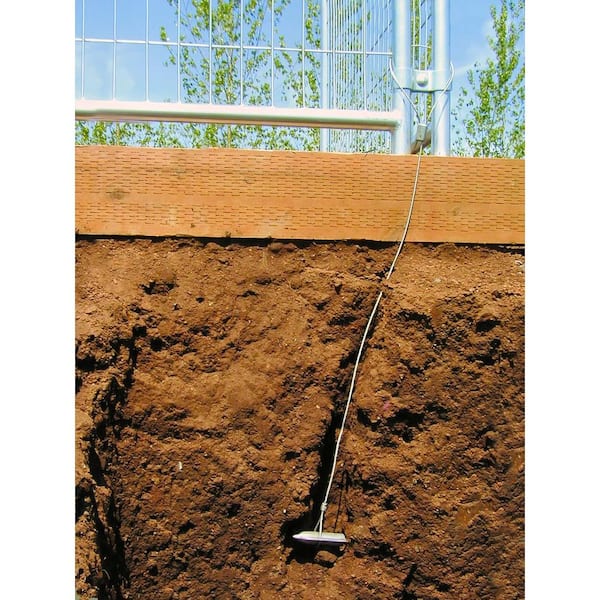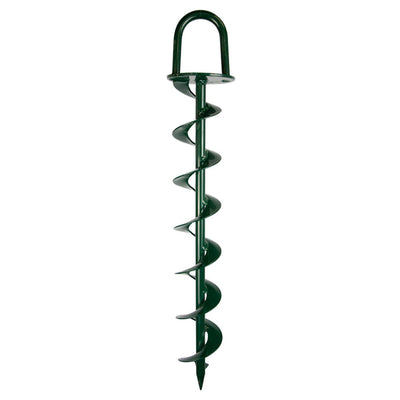Discover the Various Kinds Of Ground Support for Your Next Project
From auger anchors, which excel in diverse dirt problems, to stake anchors designed for short-term installments, the alternatives are countless. In addition, concrete and screw anchors existing unique advantages in specific situations, while deadman anchors are customized for applications requiring resistance to side pressures.

Auger Anchors
Auger anchors are a popular choice in numerous construction and landscape design projects as a result of their unique layout and effective anchoring capabilities. These supports consist of a helical screw-like shaft that is driven into the ground, enabling a safe and secure and secure hold. The spiral layout assists in very easy setup and makes the most of resistance against side forces, making auger supports particularly effective in applications such as fencing, momentary frameworks, and disintegration control.
The installment procedure of auger anchors is relatively straightforward. They can be manually or mechanically set up, relying on the size and called for deepness. This versatility enables their use in diverse dirt problems, from sandy to clayey terrains. Auger supports can be easily removed and recycled, which includes to their cost-effectiveness and sustainability.
One of the significant benefits of auger supports is their ability to disperse lots uniformly throughout the surrounding dirt, reducing the threat of soil disruption and reducing ecological impact. In addition, they are less prone to loosening or heaving over time compared to conventional securing techniques. Consequently, auger anchors are an excellent selection for jobs calling for trustworthy and durable anchoring services.

Stake Anchors
When it involves securing frameworks in a range of exterior applications, risk anchors use a simple and trusted service. These anchors are typically constructed from durable materials such as steel or aluminum, designed to hold up against ecological tensions while providing optimal stability. Their basic design enables fast installment, making them an excellent choice for permanent or temporary anchoring requirements.
Risk supports are especially useful in securing tents, covers, and various other light-weight structures versus wind and weather. They work by being driven into the ground at an angle, producing a strong hold that resists pull-out pressures - Ground Anchor. The effectiveness of stake supports depends upon several elements, consisting of dirt kind, moisture material, and the angle of installment
For included protection, numerous stake anchors include attachment points for ropes or straps, permitting for stress modifications as required. In applications such as landscape design or building, they can properly support equipment or structures on unequal terrain. On the whole, risk anchors provide a flexible and cost-efficient service for protecting different exterior installations, making them a favored choice for professionals and DIY enthusiasts alike.
Concrete Anchors
Concrete supports offer a robust solution for safeguarding structures to concrete surfaces, ensuring security and safety in various applications. These supports are vital for jobs ranging from domestic buildings to massive commercial installations. They can be found in various kinds, including development anchors, sticky anchors, and undercut supports, each designed for details lots requirements and environmental conditions.
When mounted,Growth anchors depend on mechanical mechanisms to grip the concrete. They are suitable for medium to sturdy applications. Adhesive supports use high-strength epoxy or material to bond the anchor to visit here the concrete, supplying superior load-bearing abilities, specifically in cracked concrete situations. Undercut supports develop a special form within the concrete, offering extraordinary holding power, specifically in applications where tensile tons are prevalent.
When executed properly, concrete anchors significantly enhance the structural integrity of numerous tasks, making them vital in modern-day construction methods. Understanding the specific needs of your task will certainly assist in choosing the appropriate kind of concrete anchor for the job.
Screw Anchors

Screw anchors are a functional fastening remedy that can be successfully used in a variety of applications where standard concrete supports might not suffice. These supports contain a helical design that enables them to be quickly driven right into the ground, making them perfect for use in soil and other substratums. Their unique structure gives outstanding holding power and resistance to pull-out pressures, making them ideal for many projects, from landscaping to structural assistance.
One of the main advantages of screw supports is their simplicity of installation. They call for very little equipment and can typically be set up without the requirement for excavation, which saves both time and labor prices. Furthermore, screw supports can be removed and recycled, providing a lasting remedy for temporary applications.
Screw anchors are specifically useful in locations where dirt problems are challenging, such as loose or sandy dirts. Their ability to be installed at varying depths enables for customization based on specific job needs. Generally, screw supports supply a dependable and efficient securing method, making them an exceptional option for service providers and engineers seeking effective remedies for their tasks.
Deadman Anchors
Deadman supports function as a durable remedy for maintaining structures in difficult conditions, especially where typical securing techniques might fall short. These supports include big, heavy things hidden underground, which produce resistance versus side pressures. The layout normally includes a straight element, such as a block of concrete or a metal plate, hidden in the dirt, to which straps or cables are affixed.
The effectiveness of deadman supports lies in their capacity to distribute redirected here lots over a bigger area, decreasing the risk of failure in unpredictable dirt problems. They are specifically helpful in applications such as retaining wall surfaces, short-term frameworks, and slope stablizing, where dirt movement can endanger the stability of the structure.
Setup of deadman supports requires cautious planning to guarantee they are put at the correct deepness and alignment, optimizing their load-bearing capability. While they might call for even more labor and product than light-weight supports, their reliability in damaging conditions makes them important for long-lasting jobs. Deadman supports are functional and can be adjusted to different applications, making Full Report them a go-to choice for engineers facing unique challenges in their projects.
Conclusion
Auger anchors excel in diverse dirt conditions, while stake supports fit momentary applications. For concrete surfaces, development and sticky anchors give reliable choices, and screw anchors use versatility in challenging surfaces.
In addition, concrete and screw anchors present unique advantages in details situations, while deadman supports are customized for applications requiring resistance to lateral pressures - Ground Anchor.Auger supports are a popular selection in different building and landscaping projects due to their distinct layout and reliable securing capabilities. They come in different types, including expansion anchors, glue anchors, and undercut supports, each designed for details lots needs and environmental conditions
Sticky anchors use high-strength epoxy or resin to bond the support to the concrete, supplying superior load-bearing capacities, specifically in split concrete scenarios. In general, screw supports provide a efficient and dependable anchoring method, making them an outstanding choice for service providers and engineers seeking efficient options for their jobs.